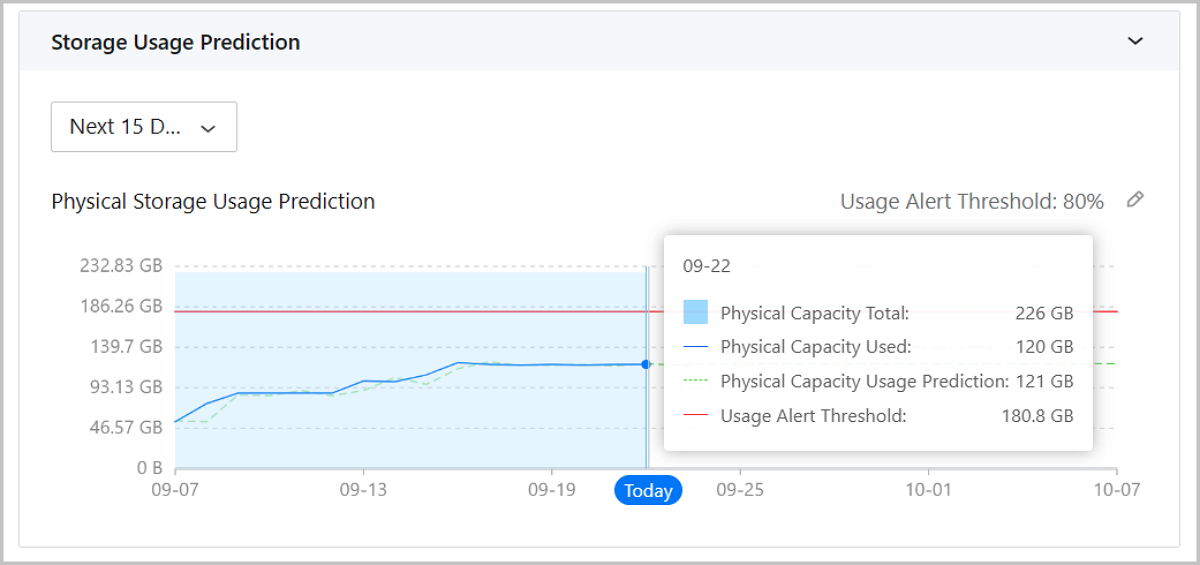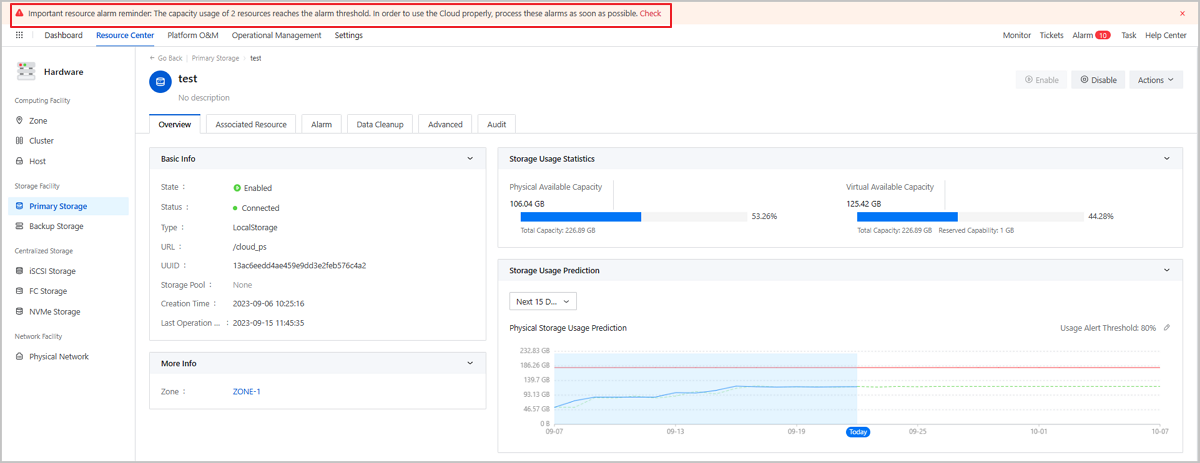ZStack Cloud Platform
Single Server, Free Trial for One Year
Starting from ZStack Cloud 4.7.21, When you migrate a VM instance or volume by Change Primary Storage and Change Host and Primary Storage, the Cloud supports for releasing unused space through provisioning method to achieve a storage migration that only migrates the actual data, saving user's space.
Starting from ZStack Cloud 4.7.21, when conducting a storage migration on VM instance or volume, the migrated resource follows the provisioning type of the target primary storage.
 Note:
Note: ZStack Cloud 4.7.21 adds a Storage Usage Prediction chart to predict the physical storage usage trends for the next 180 days based on the primary storage capacity utilization. You can view the physical capacity total, physical capacity used, physical capacity usage prediction, and usage alert threshold on the chart.

ZStack Cloud 4.7.21 provides a new global setting: Alarm Threshold of Primary Storage Physical Capacity Utilization. You can set this parameter to avoid excessive usage of the physical capacity of the primary storage. When the system predicts that the physical usage of the primary storage exceeds the threshold, an alarm is displayed.
You can specify this threshold by navigating to . You can also specify this threshold on the upper-right corner of the Storage Usage Prediction chart. If you specifically set the usage alert threshold for primary storage, this global setting does not take effect on this primary storage.

ZStack Cloud 4.7.21 provides two new resource alarms for physical storage usage prediction: Predicted Physical Capacity Utilization Exceeds Threshold and Ceph Pool Predicted Physical Capacity Utilization Exceeds Threshold. These two alarms are used to monitor the predicted physical storage usage of multiple primary storage. An alarm can be triggered when alarm rules are met.
In addition, ZStack Cloud 4.7.21 adds three primary storage-related alarms to the important resource alarm reminder, including: Primary Storage Available Physical Capacity, Primary Storage Physical Capacity Available Percent, and Ceph Pool Physical Capacity Available Percent. In this way, you can get a more conspicuous and accurate alarm information and timely deal with storage resource overload.
